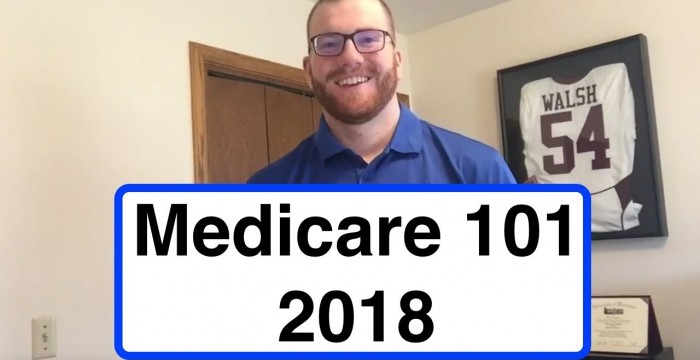Medicare 101 covers everything you need to know about Part A, Part B, Part C, and Part D of Medicare. It also goes over Medicare Supplements.
My Website:
Contact Me:
MedicareScreenShare@gmail.com
(920) 960-4312
Okay there are 4 parts to Medicare that I help people with on a daily basis, and you can see all four of them here with Medicare Parts A, B, D and also Medicare Supplement or Medigap insurance. Part A and B are what makes up original medicare. Part A is your hospital insurance and it helps cover you for inpatient care in the hospital, skilled nursing care, hospice care, and home health care. Part B is your medical insurance and it helps cover services from doctors, healthcare providers, outpatient care, home health care, durable medical equipment, and some preventive services. So basically part A pays for your room and board at a hospital and part B pays for your doctors and the equipment they use. The next major part of Medicare is Medicare Part D or medicare prescription drug coverage. Medicare Part D helps cover the costs of your prescription drugs. Medicare Part D plans are run by medicare approved private insurance companies and you pay a premium to lower the cost of your prescription drugs. The last part of Medicare is Medicare supplement insurance or Medigap. Medicare supplement insurance works alongside medicare parts A and B and is designed to fill some to all the gaps of medicare depending on which plan you choose. These plans are also offered by private insurance companies. Now if you have already done some research you may have hear about Medicare Part C or Medicare advantage plans as well. Well Medicare advantage is an alternative to these four options and it is also run by Medicare approved private insurance companies. Medicare Advantage or Part C plans replace your medicare parts A and B with a private insurance plan, and it must at least cover what medicare parts A and B cover. Some plans even offer prescription drug coverage along with other benefits. We will compare going with Medicare Part A,B,D with a Medicare supplement to going with Medicare Part C or Medicare Advantage a little later, but let first look at how to enroll into medicare and also the costs associated with it.
So the majority of people will enroll into Medicare at 65. if you are already collecting on Social Security benefits or you have Railroad benefits then you will be automatically enrolled in medicare about 3 months before you turn 65. If you do not fall under these two criteria then you can enroll into medicare 3 months before and up to 2 months after the month you turn 65. This is considered your initial enrollment period. If you missed your initial enrollment period and still want to sign up for medicare parts A or B then you will need to wait until General Enrollment Period, and general enrollment period runs between January 1st and March 31st of each year. If you enroll during the general enrollment period then your coverage will start on July 1st of the same year, and you may have to pay a higher part A and B premium for late enrollment. Lastly there is the special enrollment period. This is for people that are still working past 65 and 3 months. It gives them a 8 month period where they can sign up for parts A and B when they finally do retire, and usually without any penalty… Now when you are ready to enroll into Medicare, either at 65 or when you finally do retire, all you need to do is visit your local social security office of just give Social Security a call. Medicare Part A is usually free as long as you or your spouse paid into medicare while working and part B usually costs $134 a month as long as you make less than $85,000 filing individually or $170,000 filing jointly…
Here are all 11 standardized plans, but the only three that are competitive around the us are plans F, G and N. Plan F is the easiest to understand and covers 100% of the gaps in Medicare. So if you enrolled into Plan F and have a Medicare approved claim, it will cover all the deductibles, coinsurance, and copays of Original Medicare. Plan G is also a very easy to understand plan with it coving 100% of the gaps in Medicare with one exception. That exception is that Plan G does not cover your Part B deductible. The Part B deductible in 2018 is $183. The last plan we will be comparing is Plan N. Plan N also does not cover your $183 Part B deductible much like Plan G. There is also a $20 copay for doctor visits and a $50 copay for emergency room visits that do not result in inpatient admission. Lastly Plan N does not cover part Part B excess charges. Part B excess charges are when doctors or specialist charge up to 15% more than what Medicare is willing to pay for a test, sugary, or procedure.
Andrew Walsh
MedicareScreenShare
Owner and Independent Agent
(920) 960-4312
MedicareScreenShare@gmail.com
MedicareScreenShare.com
Medicare 101: Part A, B, C, and D of Medicare.






